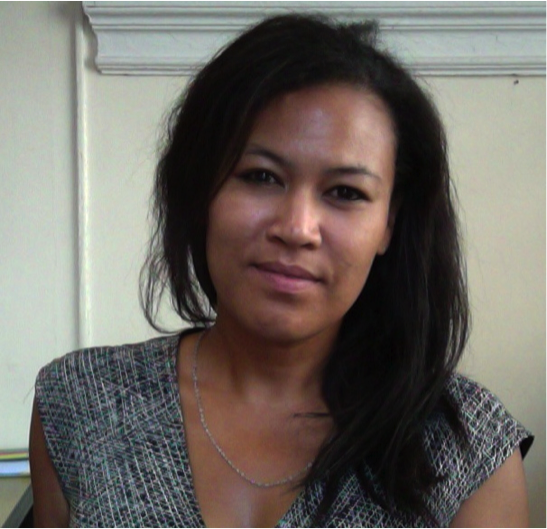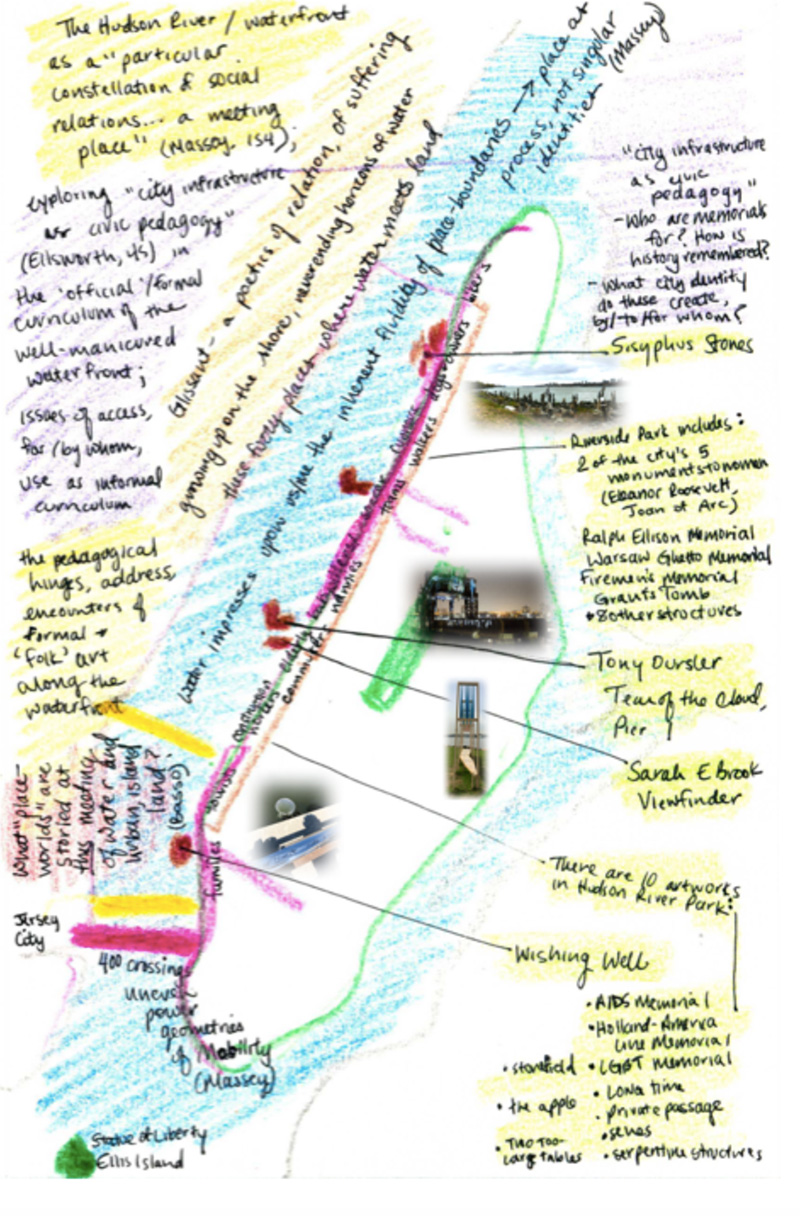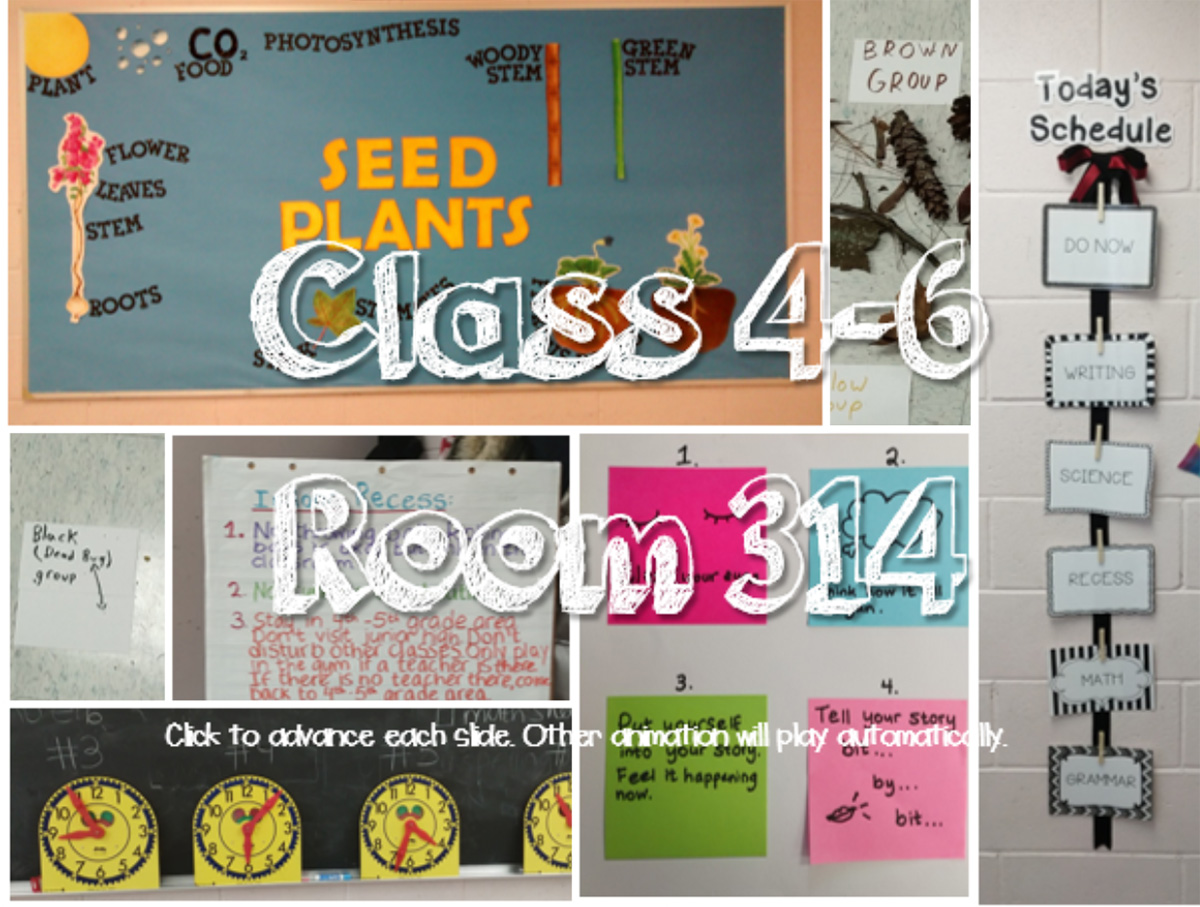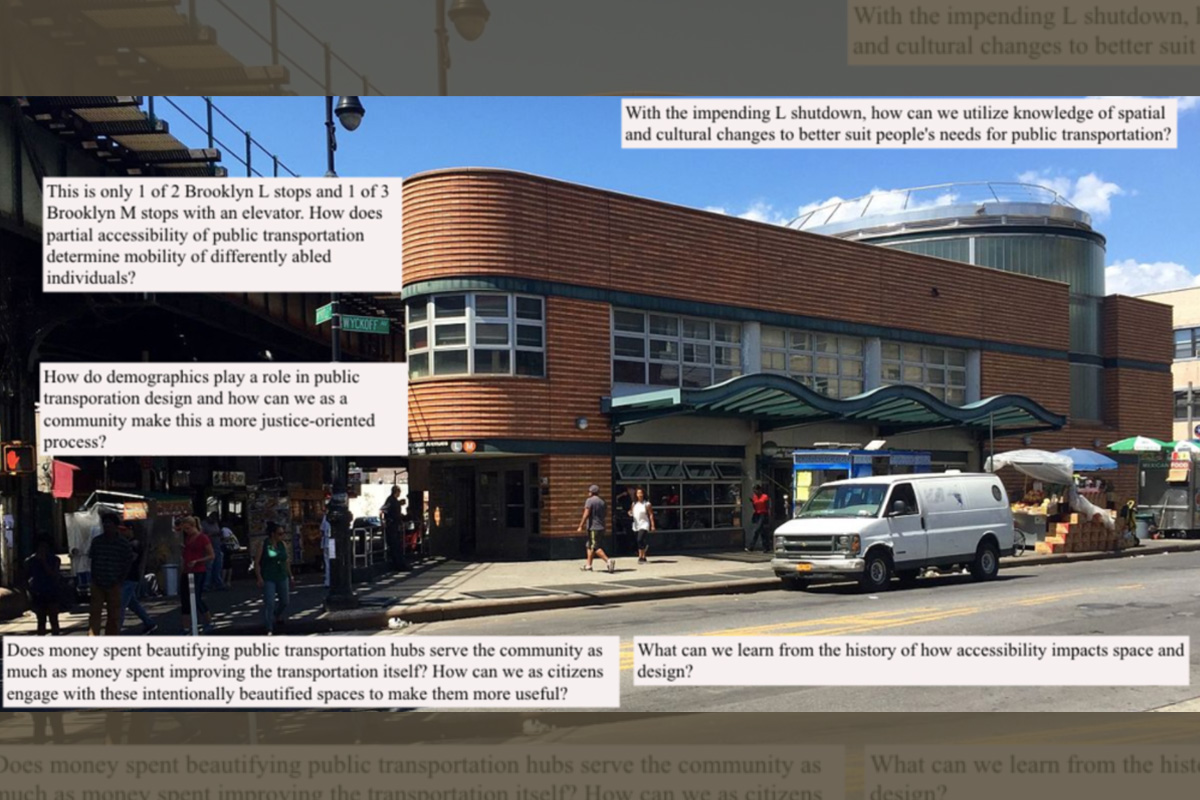Sometimes, art really does anticipate life.
Three years ago, a museum cafeteria in midtown Manhattan was the scene of a group epiphany for Jacqueline Simmons and her Teachers College colleagues Nancy Lesko, Maxine Greene Professor for Distinguished Contributions to Education, and two doctoral research assistants, Jamie Uva and Seth McCall. The space’s black-painted walls struck the group as an apt metaphor for “the challenging discussions we wanted to have about education and curriculum.
“The black paint seemed to be an open surface awaiting reply that both absorbed and contained our ideas, and just as easily allowed the canvas to be wiped clean to start anew with a fresh conversation,” recalls Simmons (Ed.D. ’09, M.Ed. ’05), Senior Lecturer, Vice Chair of TC’s Department of Curriculum & Teaching and Director of the Curriculum and Teaching Master of Education Program. “It evoked this kind of playfulness and uncertainty, which is an exciting way to think about teaching and learning.”
Simmons had previously partnered with Lesko to create a collaborative, digital space for students to reimagine curricula. The curriculum design lab, now named — what else? — Black Paint, aims to elevate prominence in curriculum studies at TC by developing experiences for individuals and organizations that focus on curricular questions about purposes and impact, selection and organization of knowledge, and learning approaches.
It’s a good story, but in keeping with the theme of fresh conversations, that was just the beginning. In 2017-18, armed with both a Provost Investment Fund Grant and a Rapid Prototyping Grant from TC’s Office of Digital Learning (ODL), Simmons and Lesko continued piloting Black Paint and designed digital courses that supported the project. And thus, last March, when TC decided to move all of its courses online in response to the COVID pandemic, Simmons was not only already there, but innovating within the medium.

STARTING A NEW CONVERSATION For curriculum design expert Jacqueline Simmons, teaching and learning are about “playfulness and uncertainty.” (Photo: TC Archives)
Consider her online course, “Curriculum Design: Place-Based Strategies,” which she developed with the particular goal of reflecting the ideas of Black Paint. The four-week, one-credit experience offers support to educators who seek strategies to develop curriculum in a wide range of contexts, including elementary and secondary schooling.
“I’m always interested in helping students expand upon the ways they view curricula — whether that's in education, pop culture or public spaces,” says Simmons, who has advised international and New York City-based NGOs, schools, universities, arts-based organizations and museums, and even co-designed a social innovation toolkit for use by the Rockefeller Foundation with NGOs and social-sector practitioners. “This course is designed to do so in a digital format, yet prepare students to teach these concepts in the classroom.”
I’m always interested in helping students expand upon the ways they view curricula — whether that's in education, pop culture or public spaces. This course is designed to do so in a digital format, yet prepare students to teach these concepts in the classroom.
—Jacqueline Simmons
In the early phase of the course, Simmons challenges students to explore the notion of ‘place’ in relation to curriculum. “I want them to conceptualize place as a learning environment. For some that might be a classroom, while for others, it could be a daily commuting route. I ask them to investigate that ‘place’ and the ways it inspires them to teach.”
Students develop intricate digital ‘maps’ of their identified place through an array of animated word collages, hand-drawn illustrations, and narratives. Many explore the elementary school classroom of their childhood or the environment they currently teach in, offering ideas that range from creating ample space for group activities to simply drawing the shades to make sure students are not distracted during classroom time.

RECHARTED WATERS A map of the Hudson River, drawn and annotated by Simmons’ student Sarah Gerth van den Berg, explores the notion of ‘place’ in relation to curriculum. (Photo courtesy of Jacqueline Simmons)
Perhaps one of the most dynamic projects in the course is the ‘curriculum walk,’ in which students either participate in a ‘shared’ walk with Simmons or conduct an independent ‘solo’ walk. The goal, either way, is to explore walking as a curricular practice while analyzing the way movement and sense reset knowledge, learner identities and teacher actions.
“Students respond to a series of prompts to observe the sights, sounds, smells, tastes and textures during their walks, as well as to the emotional experience of taking in the knowledge held in a place,” Simmon says.
Curriculum is not a matter of a few pre-selected topics that I organize into a sequence with engaging activities. There's so much more that we could be paying attention to, that we should pay attention to. And that is what motivates me to think more creatively in my teaching every day.
—Jacqueline Simmons
Each student then develops a virtual representation of their own walk and shares it in a digital discussion.
“I especially liked thinking about the physical entrance of spaces, and that came to my attention specifically through this walk,” wrote one recent student. “It brought to mind physical ways I can inform the learning experience before students even enter the learning environment.”
“At the end of the activity, it’s really amazing to see the different ways students share their experience simply through a digital lens,” Simmons says. “Some create animated films, some use audio clips — the activity invited a wide array of modalities.”
Throughout the course, Simmons uses several digital tools to ensure engagement, participation and cross-fertilization. Students communicate through Padlet, an innovative virtual tool used to share assignments and provide class feedback. Simmons also uses other “intuitive tools” — her term — such as Adobe Spark, Loom, and Thinglink to record and share her lectures. “Veronica Thomas [Director of ODL] and my course assistant, Seth McCall, really helped me articulate my digital vision for the course,” she says. “Students are also sometimes so much more knowledgeable about the digital resources available for teaching and learning.”

READING THE ROOM This project by Simmons’ student Henna Shereshevsky focused on reimagining the elementary classroom by exploring how simple changes — both in the space and in what's taught — can enhance learning. (Photo courtesy of Jacqueline Simmons)
For the final assignment in the course on place-based curriculum, students create their own comprehensive digital lesson plan. The lesson plan must incorporate concepts explored during the previous weeks — wondering, mapping and walking — to evoke the senses, emotions, memory and movement as a way to prompt learners of all ages to discuss and analyze locations’ cultures, histories and politics.
Students in this past spring’s iteration of the course responded with an abundance of innovative projects. One student designed a 10th-grade American history lesson that used the New York City public transportation system as a lens onto the early 1900s. A student who was teaching in a kindergarten class modified his Identity unit to enable his young students to wander around their classroom space and incorporate found objects and materials in creating self-portraits. Still another student mapped the hallways of her charter school and analyzed how spatial arrangements were racially coded. She even designed a workshop to assist her colleagues in thinking about how racist assumptions influence administrative choices and policies, such as the ways that students were expected to move through hallways, and the location of specific "at-risk" classrooms that stand close to the disciplinary dean's office but far from instructional supports.
“Students were really able to integrate their experiences from the previous weeks as a basis of their digital lesson plans,” Simmons says. “Their finished products and outcomes were unlike any I've seen in my ten years of teaching — truly outstanding.”
For Simmons, it all gets back to the Black Paint metaphor and the idea of constantly rewriting the script.
“Curriculum is not a matter of a few pre-selected topics that I organize into a sequence with engaging activities. There's so much more that we could be paying attention to, that we should pay attention to. And that is what motivates me to think more creatively in my teaching every day.”

